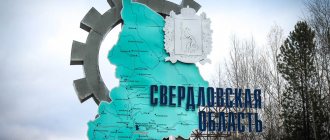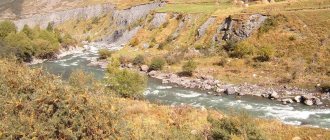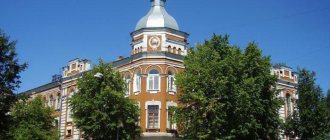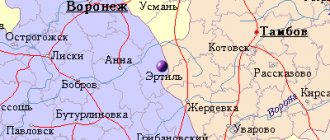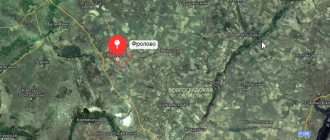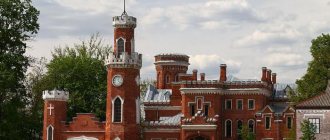Many residents of Russia are still under the rule of stereotypes and believe that the city of Voronezh is a province compared to the capital. There is some truth in these words, but in fact, Voronezh has long turned into a modern million-plus city with an established agglomeration.
The city itself is located on the banks of the Voronezh reservoir and the Don River. By the way, places on the river became living scenery for the immortal movie Quiet Don. The capital is only 515 km from here. It's a night train ride. It's faster by car. Life is in full swing here, there are many interesting and creative people! There are plenty of places for walks, as well as attractions, so it’s a must to come here, especially from May to September.
Etiology of Voronezh
Probably the simplest assumption would be that the name comes from crossing the Russian words raven and hedgehog. In his works, this idea was developed by the Russian linguist Sreznevsky. But the German linguist Vasmer, the author of the etymological dictionary of the Russian language, suggested that the city took its name from the adjective voronoi.
The most correct assumption, in the opinion of researchers, was set out in the toponymic dictionaries of Melkheev and Nikonov, where it was said that the color of the water in the rivers was really the root cause of the name. And the particles hedgehog or tender come from possessive adjectives and names of the ancient Slavs.
History of Voronezh
To this day, Russian archaeologists find ancient monuments from the times of the Arbashevskaya and Srubnaya cultures. According to a number of assumptions, this particular area is described in the ancient Aryan epic. In the north there is an archaeological complex between the Lysaya and Barkovaya mountains. It contains 34 monuments from past centuries and 568 mounds.
The Voronezh fortress was going through difficult times: after its construction, it was burned in April 1590. Only 4 years have passed and people have cut down the city again. There is no royal decree on the foundation in the archives, but an order from boyar Yuryev dated 1586 was found.
True, there is evidence that the Voronezh fortress stood before this time. One of the main attractions of Voronezh, without a doubt, was the Russian Navy of Russia, which Peter I assembled for the war at sea with the Ottoman Empire. Strengthening the Azov Fleet was a strategic move to prevent a war on two fronts. Peter created an admiralty in the city and ordered the construction of the first regular navy in the history of the country.
In 1833, Voronezh experienced famine due to severe drought, and when the crisis passed, the first exhibition of rural achievements was organized in five provinces.
When the university was transferred from Yuryev to Voronezh in 1918, Voronezh State University appeared on its basis. During Soviet rule, Voronezh became a major cultural and industrial center. In the 1930s, a large military airfield was based in the city, as well as a bomb-throwing range and a shooting range. It must be said that by the end of the 50s, the city developed the first liquid-propellant rocket engine in Russia, which made it possible to achieve the second cosmic speed.
Based on this development, an engine was created for the Vostok spacecraft, on which Yuri Gagarin launched into space. It was here that the production of the Tu-144 aircraft was established. The first Soviet airbus and wide-body aircraft in Russia were built here. At the end of the 20th century, a reservoir appeared, which, by the way, is the largest in the region.
If you want to learn more about the history of the city, you should visit the local history museum.
In 2012, the city was finally given the title of millionaire city in Russia.
Voronezh region and tourism
The area can be very interesting for tourists. A huge number of recreational and tourist sites are concentrated here: natural, architectural, historical and cultural, sacred and others.
To make your acquaintance with this region as complete as possible, we bring to your attention the top 5 most interesting sights of the Voronezh region:
- The Divnogorye Nature Reserve is an amazing place with chalk cliffs, cave churches and archaeological sites.
- Kostomarovsky Spassky Monastery, built among the rocks.
- The fabulous Oldenburg Palace in the village of Ramon.
- Beautiful and majestic Annunciation Cathedral in Voronezh.
- The beautiful Khopersky Nature Reserve is one of the oldest in Russia.
Territory, climate, relief of Voronezh
The city of Voronezh is located between the Central Russian Upland and the Oka-Don Plain. In fact, the Central Russian forest-steppe stretches here. The city covers the right and left banks of the river of the same name. It's metropolitan time here. The climate is moderate both in the center and in the regions.
In the winter season, the weather is changeable and can be slushy, but in the last 5-6 years February has been very cold, up to 30 degrees and below in the regions.
Summer time is hot , alternately dry and rainy.
Very mild and rainy autumn . The reservoir is frozen at the turn of November and December. Spring ice drift occurs from March to April. There are always fish in reservoirs. But fishermen don’t like the reservoir.
They say that the entire periodic table is collected here, it is dangerous to swim here, and sometimes such terrible monsters get caught in the nets that the media film them.
Could the reason for this be the operating Voronezh nuclear power plant?
The city has very uneven terrain throughout the entire territory. This is due to its location surrounded by an active structure on the border between hilly terrain and plain. Every year there is soil movement, which causes microseismic vibrations.
The right bank is occupied by a hilly plateau, and the left bank lies in a lowland, turning into a river zone. By the way, echoes of the relief terrain are reflected in the names of the streets. This is how the Bazarnaya and Sandy mountains appeared.
Today, environmentalists are seriously concerned about the state of the Voronezh reservoir. It is heavily polluted. In order to clean the reservoir, work is underway to increase the average depth.
In addition to the Don River, within the city limits there are the Usmanka, Peschanka and the Blue Danube stream. There are also three large and several small lakes, near which there are always large crowds of people.
The city has several very beautiful parks and squares. In particular, these are Koltsovsky and Petrovsky squares, Orlyonok, Scarlet Sails and Tanais parks. People gather here after work to breathe air, look at the fountain or read a book.
Nature of the region
The region is located in the center of the Russian Plain, which largely determines its topography. The maximum absolute heights here do not exceed 260 meters. The western part of the Voronezh region is the most elevated. The most common landforms here are ravines, beams and suffusion saucers. There are also karst caves.
The largest rivers of the Voronezh region are the Don and its numerous tributaries (Voronezh, Veduga, Ikorets, Bityug, Devitsa, Potudan and others). The region lies in the temperate continental climate zone. Winters here are moderately cold, summers are warm and quite humid. About 550-600 mm of precipitation falls annually, although hot winds and local droughts are frequent in the south of the region.
The Voronezh region is located within the steppe and forest-steppe natural zones. The region is dominated by pine and oak-pine forests, which occupy about 8% of the region's territory. The primary steppes have largely been plowed and replaced with agricultural land. The region is inhabited by wolves, hares, beavers, foxes, wild boars, roe deer and deer. The world of birds is quite rich. Rare birds include the bustard, golden eagle and steppe eagle.
Ecology
The city suffers from a large amount of sewage discharged into water bodies. The abundance of cats and dogs adds to the problems. To resolve the issue of their arrangement, relevant public organizations function. Many industrial facilities and factories are concentrated in a small area, which has a negative impact on nature. The lion's share of atmospheric emissions comes from motor transport. Measures are being taken to solve problems with waste disposal. So, in the 21st century a new landfill for solid waste was opened.
The left bank has long and confidently held the palm in terms of area pollution due to toxic gases and smog spreading throughout the city. By the way, the group Sektor Gaza took its name from these areas and sang the praises of their native land in songs, although not always disingenuous. Suddenly, people's cleanliness became a serious problem. Illegal landfills are multiplying every day. They are also the cause of fires. One-time, but very dangerous cases of oil spills, wastewater leaks from a meat processing plant. All this affects people's health.
Population
Voronezh is a large city, but it does not reach the status of a metropolis. This is all due to the low level of income of people, the constant influx of migrants and the high percentage of elderly people. With low income, Voronezh residents are in no hurry to start a family, and therefore a demographic crisis in populated areas is possible.
Finding a job is not so difficult, but you will have to look for a job with career growth and a good salary.
The average salary increased 2.5 times compared to 2014 and amounted to 32 thousand rubles.
In Novovoronezh, which is called the city of peaceful atoms, with a population of 37 thousand people, salaries are even higher. It averages 35 thousand rubles. But the work here is dangerous; the bulk of the population works at the Novovoronezh nuclear power plant. The average duration is not encouraging: for men it is 40 years, and for women it reaches 57.
Medium-sized cities 20-100 thousand people
Borisoglebsk
Population 59,864 (2020).
Rossosh
Population 62,625 (2020).
Liski
Population 53,504 (2020).
Ostrogozhsk
Population 31,829 (2020).
Novovoronezh
Population 31,540 (2020).
Semiluki
Population 27,036 people (2020).
Pavlovsk (Voronezh region)
There are other meanings of this name, see Pavlovsk
Population 24,453 (2020).
Buturlinovka
Population 24,007 people (2020).
Bobrov
Population 20,007 people (2020).
Education and culture
Voronezh is often called the City of Students. There are reasons for this, because there are more than 36 universities and 53 colleges. According to average data, 127 thousand students study there.
There are even more schools, almost 130. And they account for more than 118 thousand children. The city ranks third in the country in terms of the number of foreign students.
Just think about the latest news, there are more than one and a half thousand students from Africa, America and Europe. Entrance exams are the busiest time. Schoolchildren with excellent results at VSU are a priority, as it is included in the list of the best in the country. But admission here lasts until August and many students apply to other educational institutions to be on the safe side. VSU has branches in many cities in the region.
Education here is cheaper than in the capital, but tariffs are still steep. According to the latest news, the most prestigious professions are economist (in the field of economics), lawyer and diplomat. The most economical option is to enroll in the Faculty of Geography.
Economy of the region
The Voronezh region is one of the dynamically developing regions of Russia. It has one of the lowest unemployment rates in the country.
The most developed industries in this region are mechanical engineering, chemical industry and energy. The agro-industrial complex is also quite developed, in particular the processing of agricultural raw materials. The Voronezh region produces a wide range of diverse products: machine tools, bridge structures, electronic equipment, airbuses, synthetic rubber, mineral fertilizers, knitwear and much more.
The region's agriculture specializes in the production of beets, grains, sunflowers, vegetables, eggs and milk.
Popular walking spots
Tourists have a lot to see in the city. Here you can go on a trip and see the interesting sights of the city. From monuments dedicated to Peter I to the Museum of Forgotten Music in the House of Culture, where you can listen to musical art from different parts of the world.
Some people associate Voronezh with the cartoon about the kitten from Lizyukov Street. Many people don’t believe that such a street really exists; this is news for tourists, but it’s true. A monument to a kitten and a wise crow sitting on a tree stands on that very street. It attracts the attention of tourists; people often take pictures near it.
On Plekhanov Street, an unusual composition catches the eye: a lady sits on a chair, bowing her head sadly. She is waiting for someone, since the second chair is empty. This monument is especially close to the fair sex. Near the puppet theater there is a monument to White Bim.
There are rumors that if you make a wish and rub Bim's ear, it will come true. Local residents tell this sign with a smile, but from time to time they themselves visit the monument and whisper their wishes into Bim’s ear. From frequent rubbing by tourists and local residents, the ear became completely white.
You can’t help but go to Admiralty Square, walk along the bridge, and attach your padlock to the lovers’ railing. Major events, events and flash mobs take place here. Locals usually like to spend time here. On Admiralty Square you can see an exact copy of the Russian ship “Goto Predestination” (“God’s Providence”). The large double-decker ship was laid down at the shipyard at the end of the 17th century, and Peter I himself supervised its construction and equipment. “Goto Predestination” became the first Russian battleship. Tourists can get to the museum ship on Wednesday from 11.00 to 18.00, and from Thursday to Sunday from 10.00 to 18.00. We also recommend visiting the Sergei Yesenin Folk Museum.
The Museum of Forgotten Music is considered one of the interesting attractions of Voronezh. It houses a large collection of musical instruments brought from different parts of the world. Part of the exhibition consists of instruments recreated based on drawings and drawings from ancient books. It’s interesting that during the excursion you can not only examine musical wonders in detail, but also hear how they sound. The museum is located in the building of the House of Culture of Mechanical Engineers (108 January 9th Street).
If you rent a car, you can go to the castle of Princess of Oldenburg, preserved by the Nazis. It is believed that the ghost of a princess lives there.
Within the region, you can go to the Kostenki Museum-Reserve, where there are even the remains of a mammoth.
For shopping, go to Petrovsky Passage, where you can also have a delicious lunch and even rent a room.
Each bus stop has its own unique street fast food. It is much more popular than shawarma and cheburek. At almost every stop in the city there are kiosks of two competitors and “Russian Appetite”. While you are waiting for the bus or minibus, you can grab a snack from the local fast food.
And RK Parnas will invite you to have fun with a sauna, swimming pool and bowling alley - everything you need for a good rest. There is also a nightclub in the shopping center.
In RK Balagan Sitiva you will plunge into the atmosphere of a small town. By the way, there is nothing similar even in Moscow and the Moscow region. The Middle Ages, democracy and freedom of opinion reign here. At your discretion, any dish and beer from the home brewery, all completely for your pleasant pastime.
Administrative division into districts
The city is divided into six large districts. Two of them, Levoberezhny and Zheleznodorozhny, are located on the left bank of the Don. The residential buildings here are quite old, although Voronezh developers are now actively developing this territory. The population mainly consists of workers from factories and research institutes. The people are friendly and flexible. Families have little income
There is a black district called Koldunovka, where, according to rumors, sorcerers and witches live. By the way, there is also Drunken Street, where moonshine is always sold. All names say:
- Pasture - where horses were sold,
- Kresty is an area next to the cemetery. On the outskirts of the left bank there are holiday villages.
This whole picturesque picture ends in an area called Mashmet. He has long gained notoriety. People say bandits live here. People say it's scary to leave the house here. There have always been many Caucasian and Gypsy families here who interfere with the quiet life of people.
The counterbalance to Mashmet is the VAI region, which is between the Shinny plant, thermal power plant and SK. The microclimate in the area does not please people. Visitors rarely want to settle here. Too far from the center, and the neighborhood does not inspire confidence. These areas always appear in crime reports; it is dangerous to live here. However, development in the areas is active. Housing here is cheaper to buy and rent. Selskaya Street offers houses with excellent views and clean air. The finishing, however, is rough, but the price is not bad.
In the western part, there is the greenest and cleanest district, Sovetsky. It is surrounded by forests. Prices are higher here.
The Leninsky district is now the most actively developed. Here is the most beloved shopping center by the townspeople, Gallery Chizhova. There are no free lands now. Lenin Square is a great place for walking, as Koltsovsky Square is nearby.
Kommintern district is considered the most dynamic and youngest. It is home to a third of the city's population. There is a memorial, the Monument of Glory, and there is a road to the largest shopping centers. Photo of the monument:
Finally, the Central District represents the historical part. There are many squares, theaters, and parks here.
Borisoglebsk - once acted as a depot for Peter the Great
There are slightly fewer inhabitants in Borisoglebsk - 61,765. The settlement was founded in 1698 under the name Pavlovsk. Six years later, its development began: Peter the Great organized a logging depot here. The material was stored for shipbuilding needs, as the emperor planned the conquest of Azov. This attracted people to Borisoglebsk, but their number increased gradually: by the mid-19th century there were about 8,500 residents.
Today in Borisoglebsk there are 5 branches of higher educational institutions, 4 of which are Moscow, as well as 8 institutions of secondary specialized education. The latter includes the faculty of the Krasnodar Higher Military Aviation School of Pilots. Industry is quite well developed: there are more than 30 manufacturing enterprises.
How to get there
Voronezh is 534 km away from Moscow. Chertovitskoye Airport is located 13 km north of the center of Voronezh and receives flights from many cities in Russia and from abroad. The flight from the capital to Voronezh lasts 1-1.5 hours, and from St. Petersburg – 2-2.5 hours. You can get from the airport to Voronezh by buses, minibuses and taxis.
The M4 Don federal highway passes by Voronezh, so it’s easy to come here by car. The journey from the capital takes about 6 hours.
Regular buses "Moscow - Voronezh" run from the metro stations "Paveletskaya", "Shchelkovskaya", "Krasnogvardeyskaya" and "Varshavskaya". Buses reach Voronezh in 6-9 hours. You can travel from St. Petersburg to Voronezh in 20 hours. All intercity bus services are accepted by the South-Western bus station, Levoberezhny and Central bus stations. There is also more than one railway station in the city.
For those who drive, it is worth planning travel routes depending on the time of day and day of the week. As in any large city in Russia, during rush hours there are traditional traffic jams in the center, and on weekends there is a congestion of cars leaving the city.
How to get to Moscow. Voronezh residents believe that the capital is close - only 500 km along the M-4 highway with toll sections. If you leave by car early in the morning, you can get there by 10-11 o’clock, do all your business and return home before evening.
Geographical location and area of the Voronezh region
The 51st largest subject of the Russian Federation is located in the southwest of the European part of the country. It is only 500 kilometers away from the capital of the state. The area of the Voronezh region is 52.2 thousand square meters. km. In terms of territory size, it is approximately comparable to European states such as Croatia, Denmark or Slovakia.
The region is part of the Central Federal District of the Russian Federation. It directly borders on seven regions (Kursk, Lipetsk, Tambov, Volgograd, Saratov, Belgorod and Rostov), and also goes to the state border with Ukraine.
The area of the Voronezh region in comparison with many other constituent entities of the Russian Federation is not so large. However, it occupies at least a third of the entire Black Earth Region (one of the economic regions of the country). The configuration of the area is compact. From north to south it stretches for 277 kilometers, and from west to east – 352 kilometers.
Interesting Facts
- The first Russian city appeared in the 9th century in the Chernigov region. Its name comes from the nickname Raven, so the name of the settlement was also pronounced with the emphasis on the first syllable. The second Voronezh was built, thanks to Chernigov settlers, near Ryazan. Mentions of him can be found in Russian chronicles for 1177. Then the emphasis in the name moved to the second syllable, and this is how the place and the river were called. And in the 16th century, after the construction of a fortress here, the name “Voronezh” was assigned to it.
- There is a street called Peter Sazonov in the city, but such a person has never existed. Previously, this place was the location of a street named after the revolutionary Pyotr Alekseev. It was crossed by another street, which received its name in memory of the Socialist Revolutionary terrorist Yegor Sazonov, at whose hands the Tsarist Minister of Internal Affairs V.K. Pleve died. When the city was being reconstructed, the names of the two streets were combined. Thus was born a new street, named in honor of an unknown person, Peter Sazonov.
- There is an entire district in the city named after an enterprise that never existed - VAI or Voronezh Aviation Institute. It was planned to be created before the start of the Great Patriotic War, but these plans were not destined to come true.
- Near the Mir cinema there is a monument to the hero of the popular cartoon - the kitten from Lizyukov Street. And there is also a monument to the dog, the hero of Gabriel Troepolsky’s story “White Bim Black Ear.”
- In June 1941, the Comintern plant began producing Katyusha launchers.
- In 1968, the Voronezh Aviation Plant put into serial production the supersonic transport aircraft TU-144, whose speed was more than twice the speed of sound.
- Alekseevo-Akatov Monastery is located at the address: st. Liberation of Labor, 1B. This monastery is considered the oldest in the Black Earth Region. Not only believers, but also everyone who is interested in Russian temple architecture is allowed into the monastery.
- The Church of the Intercession of the Blessed Virgin Mary is located in the village of Otradnoye, interesting for its significance for pilgrims, and is also a historical monument.
- Interesting news: the only children's railway has opened in the city of Liski.
Modern city
The city of Voronezh is famous for its developed infrastructure and industry. The space and aviation fields bring great fame. It was here that the TU-144, engines for the famous Vostok spacecraft began to be produced, and the first IL-86 airbus was produced. Today, the chemical, food, and wood processing industries are developing. The trade sector is developing rapidly.
Voronezh is a major transport interchange. There are two railway stations here and a third one is being designed. The international airport is located at a distance of five kilometers from the city. Currently, a plan for the construction of the metro is being developed.
Cost of new buildings
While housing costs are falling in other Russian cities, the city and region are experiencing steady growth. The price per square meter averaged 48.4 thousand rubles. in January 2020. This is 4.8% higher compared to December 2022. Analysts attribute the rise in price of new housing to the transition of developers to working under new laws. Now they cannot attract money from shareholders for the construction of the facility, and financing is carried out with the help of banks, which require not only the return of funds, but also the payment of interest on loans issued. The developer includes additional costs in the cost of new housing.
Let's consider the average cost of one square meter in the districts of the city of Voronezh. For convenience, the areas are presented in order of increasing prices:
- The leader is the Levoberezhny district - the cost of 1 square meter is 40.1 thousand rubles;
- second place was shared by Zheleznodorozhny and Kominternovsky districts - in January 2022, the average cost per square meter here is 44.4 thousand rubles;
- The Sovetsky district offers buyers apartments with an average price of 48.6 thousand rubles. per one square meter;
- Last in the ranking, and therefore first in the list of “highest price per square meter” are the Central and Leninsky districts - 51.0 and 52.3 thousand rubles. respectively.
On the primary market, the sales price by number of rooms is as follows:
The average cost of a one-room apartment is RUB 2,017,064. The most affordable option is located in the Zheleznodorozhny district. The cost of an apartment here starts from 1.7 million rubles.
The average cost of a two-room apartment is RUB 3,119,676. The cheapest one is located in the Left Bank region. Its price is 2.3 million rubles. The most expensive “kopeck piece” is located in the Leninsky district and costs 3.7 million rubles.
The average price of a three-room apartment is RUB 4,061,867. The economy segment starts from 2.9 million rubles, and comfort class housing with an improved layout starts from 5 million rubles.
Housing prices do not differ much in different areas, so it is better to live in the center - when searching, focus on Revolution Avenue. If you want peace, stay on quiet streets: Karl Marx, Friedrich Engels or Ordzhonikidze. If you love the perpetual movement of the city, choose Revolution Avenue or Koltsovskaya.
More details about new residential complexes in each district can be found in the catalog of new buildings in Voronezh
Urban settlements
- Anna
Population 16,064 (2020).
- Gribanovsky
Population 14,652 (2020).
- Talovaya
Population 11,073 (2020).
- Kantemirovka
Population 10,704 (2020).
- Ramon
Population 8,545 (2020).
- Kamenka
Population 7,953 (2020).
- Novokhopyorsky
Population 7,771 (2020).
- Khokholsky
Population 7,544 (2020).
- Plate
Population 7,240 (2020).
- Panino
Population 5,911 (2020).
- Podgorensky
Population 5,634 (2020).
- Davydovka
Population 4,784 (2020).
- Strelitza
Population 3,949 (2020).
- Elan-Kolenovsky
Population 3,493 (2020).
- Olkhovatka
Population 3,287 (2020).
- Nizhny Kislyai
Population 3,241 (2020).
- Pereleshinsky
Population 2,566 people (2020).


